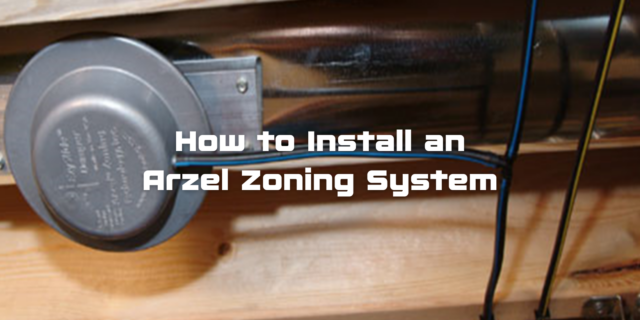How to Tackle Temperature Variances in Customers’ Homes

Every contractor has that one client. The one you installed a few years ago, but that you still hear from. It may be to schedule regular maintenance, or it might be for another reason. Sooner or later, the conversation will come around to one recurring subject. And you’ll need to pull out your go-to solution to tackle temperature variances in customers’ homes.
The question they ask is, “Why is it still so much warmer/colder in this room than that room?”
And truth be told, it probably bothers you too. After all, you’re a professional HVAC installer. You want every customer to be happy. But you also know that no two jobs are the same, and no solution works every time.
But this question does give you a chance to build trust with the customer. You can assess their needs, and possibly provide an answer that results in long-term satisfaction and overall savings. To get to the answer the customer wants, you’ll want to work with them on a “Temperature Audit.” Here’s what that entails:
Room to Room, and Unit to Vent
Start with the issue at hand, in the areas the customer is familiar with. Go room to room with them, getting a temperature reading in each room. Ask the customer how it fluctuates in the course of a day, and how the room in utilized. Note the window location and condition, the number of exterior walls, the amount of sunlight, and the areas of infiltrations.
Now that they’ve told you their side of the equation, start looking at your side of things. Note the location of the HVAC unit, and how the ductwork is integrated into the house. Count and note vents, air returns, and travel paths. These are all parts of your work the customer is at least visually familiar with, and it will start to build trust with them. That trust will be important when it is time to look at solutions.
Do Your Ductwork
It’s not likely that your customers understand the role of ductwork as the main component for distributing airflow in their homes. Perform a thorough inspection of their current ductwork to check for any areas that are damaged or leaking. Highlight to the homeowner how leaks can cause the temperature variances they’re experiencing.
You should also examine how the ductwork is installed and where it’s installed. Was it done correctly? Is it installed in the right place to deliver maximum performance? Does the ductwork-to-equipment capacity meet the recommended specifications? Are there too many joints and elbows? Once you’ve got the answers to these questions, you’ll have the information you need to inform the homeowner of needed repairs or updated solutions to their issue.
One key piece of information to share with the customer is the role elbows, especially 90-degree ones can play in air flow. An easy way to explain it is that because of the air disruption and backflow such a sharp angle can cause, every right-angle elbow adds 30 feet to the “travel distance” air has to make from the main unit to the room vent. That bedroom on the second-floor west side? It may only be 30 feet from a basement unit, but if there are 6 elbows along the way, it might as well be in the neighbor’s house if the system wasn’t designed for it.
The Science of Thermal Dynamics
Again start with the basics – Hot goes up, Cold goes down. That may start to identify some of the issues. From there, it’s important to look at thermal dynamic effect of mixing return air throughout the home. Let’s say the client is an empty nester who has shut off the vents in the now unused bedrooms. Great, but now the Master bedroom is humid and warm. Explain to them that while those rooms may not need to be as cooled as used rooms, by completely “cutting them off” you’re causing the return air to be much warmer and more humid than the system was designed for. Short-term gain, causing long-term pain.
The Significance of Staged Equipment
To gain the best performance and tackle temperature variance, staged equipment can be an important solution. Staging allows the equipment to run at peak conditions for a longer portion of the year, optimizing comfort. When the heating is sized for extreme cold and we’re in a season that’s more chilly than cold short cycling causes drafts and ineffective operation. In the cooling season, designed for the worst the location throws at us AC’s become less effective in the mild seasons reducing humidity removal, causing short cycling, and driving up energy consumption with the more frequent starting of the compressor. Staging more closely matches the operation to the season improving comfort and performance for the customer.
How HVAC Zoning Can Help
For many of the issues causing temperature variance, HVAC zoning can provide an effective solution that improves airflow in your customer’s home and help them be more comfortable all year long. Zoning is the ideal solution to promote as it provides your customers with many benefits, they may not have thought about before:
- Multiple thermostats are installed to control airflow in rooms more effectively.
- Usage patterns can be established upon installation to control airflow correctly.
- Arzel Zoning systems are easily installed in their existing ductwork.
If HVAC zoning is right, work with your customer on a plan to group rooms, by location and usage, into the zones needed to mitigate their issues. South-facing room with older windows? Unused bedrooms? Master bedroom and on-suite bath? All can be grouped and planned out to provide year-round comfort. And the cost of a zoning system is in most cases far less expensive than solutions like new windows, new handlers, and ductwork or split systems.
Get Started with Arzel Zoning
Learn more about key zoning topics, and allow our instructors to provide you with simple and easy techniques to increase revenue while also saving time on installation. We offer many training opportunities, and some of them are free. Set one up today!






